By Victoria on July 8th, 2011
4 Small Diet Changes that can Make a Big Difference
 It may seem like a rather daunting prospect to change your diet to one that is healthful. However, the truth is that small changes can make a big difference too.
It may seem like a rather daunting prospect to change your diet to one that is healthful. However, the truth is that small changes can make a big difference too.
If you want to shed extra pounds, fight off disease and enjoy more energy, there are a number of things you can do today to start on your path to good health:
- Add more heart-healthy fats to your diet – Although many people automatically assume that they must cut fat from their diet, the fact of the matter is that there is a huge difference between bad fats and good fats. Luckily, there are a number of heart-healthy fats that you can begin incorporating into your diet, including olive oil, canola oil, nuts, seeds and avocados. Heart-healthy fats are important for your body’s metabolism and will help your body perform better and stave off hunger. A good way to begin incorporating heart-healthy fats into your diet is to cook with olive oil or canola oil.
- Reduce your intake of soda – There is no better way to sabotage your diet than with soda. Regular soda is laden with sugar and calories, while diet soda is thought to increase your desire for high-calorie and sugary foods and zap your energy. One of the best choices you can make when it comes to your diet is to drink more water. Another good option is green tea. Water hydrates the body, helps to flush toxins from the body, improve your body’s bowel habits and fight off viruses. Instead of drinking a set number of glasses of water each day, simply begin replacing other types of drinks with water. You may soon find that your waist line will thank you for it!
- Add more whole grains to your diet – Simply replacing simple, processed grains with their whole grain counterparts will provide your body with essential B vitamins and fiber, both of which are crucial to a good immune system. By switching out white potatoes, bread and rice with a whole-grain alternative you can begin making positive changes to your diet. Some options when it comes to whole grains include: millet, barley, buckwheat, wild rice, whole grain breads and quinoa.
- Eat breakfast – If you incorporate breakfast into your diet every morning, you are less likely to overeat during the day. It stabilizes your blood sugar, staves off hunger and provides you with the energy you need to get you through the day. From better concentration to less fatigue, eating breakfast has a plethora of benefits for both the body and the mind. If you are having a hard time sticking to your diet, a breakfast rich in protein and whole grains is a great way to switch things up. Avoid eating simple carbs, though, as they will cause a spike in hunger because of a drop in blood sugar after just a few hours.
You don’t have to perform a major overhaul of your diet to see results. You can just begin to implement small changes to improve your health and lose weight too.
VN:F [1.9.17_1161]
Rating: 0.0/10 (0 votes cast)
VN:F [1.9.17_1161]
Share this story:
About The Author
I have always been interested in food and the effect it has on weight and the bodies overall well being, but it wasn't until I removed sugar, coffee and bad carbohydrates that I truly understood that you are what you eat!
By Victoria on June 2nd, 2011
Examining the Gluten-Free Diet
You may have noticed the glut of gluten-free foods on the grocery shelves, and you may wonder about the benefits of a gluten-free diet. Indeed, there are many advantages, including natural weight loss!
The Facts about Gluten
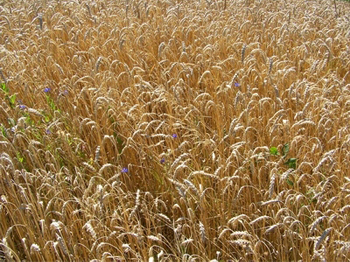
Gluten is a protein found in wheat, barley and rye products. You can find gluten in most cereal and breads. Gluten has garnered much attention over the last few years, as doctors have found that millions of Americans have an allergy to gluten – an allergy that has often gone undiagnosed.
It is because of these new findings about gluten that has spurred a number of food companies to make foods that are labeled gluten-free.
The Rise of Celiac Disease
Celiac Disease is an autoimmune disease that is essentially an intolerance, or insensitivity, to gluten found in foods. The incidences of Celiac Disease are widespread, with most people suffering from everything from poor bowel habits and stomach pain to infertility, bloating and exhaustion. Scientists expect that about one percent of the population has an insensitivity to gluten.
Can you Benefit from a Gluten Diet?
Many individuals who adopt a gluten-free diet claim to feel better, which may mean that they had an insensitivity to gluten. Other individuals claim to lose weight following a gluten-free diet, although it is important to know that gluten-free foods typically have the same amount of carbohydrates as their gluten counterparts.
If you follow a gluten-free diet, you may find that you will lose weight just by cutting down on starchy, processed foods. Lowering your intake of processed foods helps to lower insulin, which may thereby help you lose weight and provide you with increased energy.
What Foods Contain Gluten?
To avoid gluten, do not eat anything that contains wheat, rye and barley. Oats do not contain gluten, although it is not out of the question that your favorite oats contain gluten, as some oats are manufactured alongside wheat products.
There are a number of safe foods when it comes to gluten, including: corn, rice, potatoes, soybeans, buckwheat, quinoa, and amaranth.
If you suffer from intestinal problems, such as poor bowel habits (constipation and/or diarrhea), bloating and gas, you may want to try implement a gluten-free diet. Although your doctor can easily diagnosis you with an insensitivity to gluten, you can also experiment on your own, as there are no health risks associated with going gluten-free.
Even if you don’t feel like you have insensitivity to gluten, you may want to try a gluten-free diet for weight-loss and health purposes. Keep in mind, however, that in order to really see the benefits of a gluten-free diet you need to adopt this diet for at least a month or two.
One of the most important things you can do when it comes to eating gluten-free is to read the nutrition label on all foods. Given that many of the packaged foods today are marked “gluten-free,” it is easier than ever to adopt a gluten-free diet.
VN:F [1.9.17_1161]
Rating: 0.0/10 (0 votes cast)
VN:F [1.9.17_1161]
Share this story:
About The Author
I have always been interested in food and the effect it has on weight and the bodies overall well being, but it wasn't until I removed sugar, coffee and bad carbohydrates that I truly understood that you are what you eat!
By Victoria on April 19th, 2011
Study Finds Link between Genes and Yo-Yo Dieting
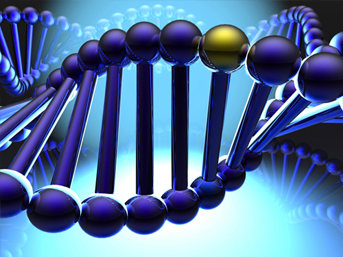 If you’ve become frustrated because it seems like your weight is constantly yo-yoing, you’re not alone. In fact, scientists may have discovered a reason why so many of us put on the pounds after completing a successful diet: your genes!
If you’ve become frustrated because it seems like your weight is constantly yo-yoing, you’re not alone. In fact, scientists may have discovered a reason why so many of us put on the pounds after completing a successful diet: your genes!
A study, completed by the Maastricht University’s Department of Human Biology, found that a gene that regulates blood pressure may also be responsible for post-diet weight gain for women. In particular, this study found that women who had a tendency to quickly gain weight back following a diet had a higher concentration of a certain protein in their blood during dieting.
As a result of the study, researchers hope to develop a test that will identify people who are susceptible to weight gain following dieting. Before this study was conducted, there was no link between this particular protein and obesity.
A Test for Predicting Yo-Yo Dieting
Researchers, at this point, have no explanation for what they found, but they hope that within a few years, a test will be developed that will help identify individuals who may be at risk for weight gain following a diet. The protein researchers found to be responsible for weight gain, which is known as the angiotensin 1 converting enzyme, or ACE, is currently found through tests for blood pressure. Hospitals currently use a test to check activity for regulating blood pressure.
It is estimated that up to 80 percent of dieters suffer from weight gain following dieting, and the majority of those people return to their original weight within a year following a diet.
Details of the Study
The Maastricht University’s Department of Human Biology study followed 100 women, ages 20 to 45; half of the women in the study maintained their post-diet weight and half did not. Dr. Ping Wang, a scientist in the research group, published the findings of this study in the online scientific journal, PloS ONE.
How You Can Prevent Yo-Yo Dieting
Although a test to identify this protein is still a few years away, there are a few things you can do to fight the yo-yo dieting effect:
- Stay positive – Destructive thought patterns are the quickest route to failure, so it is important to change your mind-set about food and dieting. Make a conscious effort to control your eating and think about what you’re eating before putting anything into your mouth.
- Use mental imagery – Creating mental images is thought to trigger electrochemical changes in your brain that enable you to better translate your thoughts into action. Instead of simply saying, “I must take a walk today,” imagine yourself enjoying a walk in the sunshine, and chances are, you will be more likely to follow through on this action.
- Think positive – The best way to continue a positive pattern of eating is to think positive. Don’t let negative thoughts intercept your mind-set, as this is often the best way to ensure failure when it comes to maintaining your weight. Take the time to reflect upon your day and pat yourself on the back if you made good decisions that day. On the other hand, don’t beat yourself up if you had an “off” day; instead, make a promise to start fresh the next day and move on.
While there may be a genetic marker that can contribute to yo-yo dieting, know that your weight is still in your hands with a positive attitude and healthy lifestyle.
VN:F [1.9.17_1161]
Rating: 0.0/10 (0 votes cast)
VN:F [1.9.17_1161]
Share this story:
About The Author
I have always been interested in food and the effect it has on weight and the bodies overall well being, but it wasn't until I removed sugar, coffee and bad carbohydrates that I truly understood that you are what you eat!
By Victoria on April 15th, 2011
6 Common Myths about Diet and Weight Loss
 Thanks to books, television, radio and the Internet, there is a seemingly endless amount of information on dieting and weight loss. It is no wonder, then, why there are so many myths about these two topics floating around.
Thanks to books, television, radio and the Internet, there is a seemingly endless amount of information on dieting and weight loss. It is no wonder, then, why there are so many myths about these two topics floating around.
You want to shed extra pounds and maintain a healthy diet, but how you do begin separating the facts from the myths? Here we examine some of the most common myths about dieting and weight loss so you can become better educated when it comes to following a healthy diet:
- Myth #1: If you eat after dinner you will gain weight.
Fact: The truth is that your weight loss efforts will not be inhibited if you indulge in a meal beyond 8PM. Your body works by taking in calories and burning them, regardless of the time of day (or night).
- Myth #2: Fasting will kick-start any diet.
Fact: Any type of fasting automatically puts your body into “survival mode,” thereby actually slowing your rate of metabolism! The best way to keep your metabolism at its peak is to eat regularly. Plus, fasting usually results in intense hunger, which will ultimately cause you to overeat.
- Myth #3: Low-carb diets are more successful.
Fact: Although it may seem like losing weight is easier when you adopt a high-protein, low-carb diet, the truth is that people who follow these types of diets have a much harder time keeping the weight off long-term. In order to stick to a healthy diet and weight loss program, it must be sensible and reasonable, and eliminating entire food groups from your diet makes it incredibly hard to maintain in the long run.
- Myth #4: The best way to lose weight is to drink water when you’re hungry.
Fact: Although water will give you a sense of fullness for a short period, it is not a solution to hunger. Eating foods rich in protein and fiber is the best way to stay comfortable throughout the day and keep your blood sugar levels at reasonable levels so you don’t experience intense hunger and mood changes. Although water should be a staple of every healthy diet, nothing should replace healthy whole grains, vegetables, fruits and proteins in your diet.
- Myth #5: Exercising on an empty stomach burns more fat and calories.
Fact: Exercising on an empty stomach will not burn more fat and calories; in fact, it may do more harm than good because you aren’t supplying your body with the energy to burn calories. Plus, working out on an empty stomach will likely cause fatigue, thereby cutting a productive workout short.
- Myth #6: The best way to lose weight is to choose low-fat or fat-free packaged snacks.
Fact: Low-fat and fat-free foods may be lower in fat, but most of the time the manufacturer replaces the fat with sugar. Because the body turns excess sugars into fat, you may be doing more harm than good every time you indulge in one of these snacks. It is, perhaps, just as important to pay attention to the sugar content in foods as the fat content, as both of these ingredients can lead to weight gain.
Bust these myths, and you’ll be in a better position to lose weight and achieve your goals!
VN:F [1.9.17_1161]
Rating: 0.0/10 (0 votes cast)
VN:F [1.9.17_1161]
Share this story:
About The Author
I have always been interested in food and the effect it has on weight and the bodies overall well being, but it wasn't until I removed sugar, coffee and bad carbohydrates that I truly understood that you are what you eat!
By Victoria on April 14th, 2011
How to Squeeze Physical Exercise into your Day
 Our doctors tell us to get 30 minutes of exercise every day, but for most of us, that’s easier said than done. In fact, many of us are so discouraged by this seemingly impossible goal that we fail to exercise at all.
Our doctors tell us to get 30 minutes of exercise every day, but for most of us, that’s easier said than done. In fact, many of us are so discouraged by this seemingly impossible goal that we fail to exercise at all.
However, exercise doesn’t have to take place in one chunk of time each day. Instead, we can find moments throughout our day to squeeze in a few minutes of exercise. In other words, it may be easier to attain those 30 minutes of physical exercise than we thought. Here’s how:
- Take the stairs – It may be easier to hop on an escalator or elevator, but it will do your body good to take the stairs. Just walking up and down a set of stairs a few times a day will add up quickly when it comes to getting in your daily does of exercise.
- Move around during the commercials – Of course you should be able to watch your favorite television shows after a long day of work, but use those commercial breaks to your advantage. Simply sliding down onto the floor to do some legs lifts, crunches or push-ups will help you in your quest to achieve more physical exercise. Consider that a one-hour show has up to six commercial breaks! That is ample opportunity to get your exercise!
- Parking the car – If you live close enough to work to bike instead of drive, or if you have to make a pit stop at your local convenience store for a loaf of bread and you can walk instead of drive, why not? Although you may not be able to do this regularly, just switching up your routine once in a while and leaving the car at home will help you achieve your exercise goals.
- Park further away – The next time you head to your local mall or grocery store, don’t waste your time looking for the closest parking space. Park further away and use this opportunity to stretch your legs.
- Clean the house – Ten or twenty minutes of mild housework can get your heart pumping. Sweeping the floor, vacuuming the carpets or scrubbing the bathtub are all great ways to get moving. Plus, you have the added bonus of enjoying a neat and tidy home!
- Get in touch with your green thumb – A great way to enjoy a quiet afternoon and squeeze a little exercise into your day is to head outdoors and garden. From mowing the lawn to pulling weeds and planting flowers, gardening is a great activity that is good for both the body and the mind.
- Stand up while talking on the phone – Many of us are connected to our phones for the better part of the day because of work, so why not take advantage of this time to get a little exercise in your day? Simply standing up and either walking in place or walking around your office is a great way to get your heart pumping.
Exercising is easy when you look for smart, yet small windows to incorporate a little heart-pumping activity!
VN:F [1.9.17_1161]
Rating: 0.0/10 (0 votes cast)
VN:F [1.9.17_1161]
Share this story:
About The Author
I have always been interested in food and the effect it has on weight and the bodies overall well being, but it wasn't until I removed sugar, coffee and bad carbohydrates that I truly understood that you are what you eat!
By Victoria on April 2nd, 2011
Could Your Diet Actually be Sabotaging your Weight Loss Efforts?
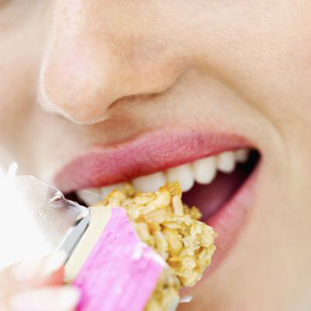 You think you’re following a healthy diet when you step onto the scale and discover you’ve gained five pounds! What’s going on?
You think you’re following a healthy diet when you step onto the scale and discover you’ve gained five pounds! What’s going on?
If you’ve found yourself in the same situation, you could very well be sabotaging your weight loss efforts with nothing other than your diet! Don’t let the small mistakes sabotage your diet.
Here are some of the most common diet mistakes you could be making every time you sit down for a meal:
- 100-calorie snack packs – Certainly, those 100-calorie snack packs are a great way to indulge in a little treat. The problem is that they are usually very small and leave us feeling less than satisfied. So what do we do? You guessed it: grab for another innocent snack bag. A better solution may be fresh fruit or cut vegetables with a little hummus or a handful of heart-healthy nuts. These types of snacks with fiber and protein keep us fuller longer, thereby staving off our hunger pains until dinner.
- Diet snacks – The “fat free” snacks you stock your pantry with may be doing more harm than good. Although the snack may be low in fat or free of fat, it likely has a ton of sugar to make up for the loss of taste. And, as we all know, our bodies turn sugar to fat. Instead of eating low-fat or fat-free cookies, for example, opt for a regular cookie (perhaps even one made with whole wheat or oatmeal for the fiber benefit), but limit yourself to one or two.
- Sugary drinks – Unless you’re drinking coffee, tea, diet soda or water, you’re taking in calories. In particular, sweetened fruit drinks and sodas can add hundreds of calories to your diet each day. Instead of drinking a fruit cocktail or even a large glass of orange juice, opt for water or skim milk and instead grab a piece of fruit; the fiber will keep you feeling full.
- Energy bars – Energy bars are a big market, and they are usually designed as a meal replacement. Although energy bars are usually packed with fiber and other essential nutrients, they are not low-calorie foods and probably should not be the first thing you grab when hunger strikes. Instead, use energy bars when you are too hurried to enjoy a healthy meal.
- Fat-free salad dressings – Fat-free salad dressings are not necessarily healthy. It is important to realize that fat-free dressings usually replace fat with sugar. If you are going to enjoy a large salad, skip the fat-free salad dressing and instead choose a salad dressing with heart-healthy oils, such as olive oil. Mix your own healthy salad dressing with olive oil, balsamic vinaigrette, and a dash of fresh ground pepper and salt, and your waistline (and heart) will thank you.
- Yogurt – There are plenty of reasons to add yogurt to your diet, but pay close attention to the type of yogurt you are choosing. Many types of flavored yogurt contain a large amount of sugar. The best way to enjoy the benefits of yogurt is to choose a plain yogurt and add fresh fruit to it.
Many seemingly “healthy” or “diet” foods may be wreaking havoc on your weight loss plans. By avoiding the pitfalls listed, you can more quickly be on your way to achieving your ideal weight.
VN:F [1.9.17_1161]
Rating: 0.0/10 (0 votes cast)
VN:F [1.9.17_1161]
Share this story:
About The Author
I have always been interested in food and the effect it has on weight and the bodies overall well being, but it wasn't until I removed sugar, coffee and bad carbohydrates that I truly understood that you are what you eat!
By Victoria on March 27th, 2011
The Benefits of Fiber may be Farther Reaching than Previously Thought
 Fiber helps the digestive track perform at its peak, thereby allowing you to flush waste and toxins from your body and – voila – lose weight. But what many people don’t know is that fiber has many more benefits beyond weight loss.
Fiber helps the digestive track perform at its peak, thereby allowing you to flush waste and toxins from your body and – voila – lose weight. But what many people don’t know is that fiber has many more benefits beyond weight loss.
A recent study found that fiber may also lower your risk of dying from cardiovascular, infectious and respiratory diseases. A new study, recently published in the Archives of Internal Medicine, found that over a nine-year period, people who ate a fiber-rich diet decreased their risk of dying when compared to people who did not incorporate more fiber into their diet.
Delving into Fiber
The fiber study, which was performed by the National Institutes of Health and AARP, studied 219,000 men and 169,000 men from 50 to 71. The study showed that people who ate at least 26 grams of fiber were 22 percent less likely to die from cardiovascular, infectious and respiratory diseases than those people who consumed the least amount of fiber (13 grams or less a day).
The study also showed that individuals who received their fiber from grains enjoyed the most benefits. The study did have its share of limitations, though, such as those people who ate more fiber each day were also likely to have better overall diets.
How Much Fiber is Enough?
The Federal dietary guidelines recommend that people following a 2,000-calorie-a-day diet should get at least 28 grams of fiber, but many people simply don’t know how to incorporate this much fiber into their diet. This is probably why most Americans consume just 11 grams of fiber per day, on average.
The good news, however, is that the Food and Drug Administration now requires fiber to be listed on the Nutrition Facts panel on food labels, thereby making the task of consuming more fiber an easier one.
Easy Ways to Add Fiber
If you are looking to add more fiber in your diet, but you’re not sure where to start, here are some easy ways to begin incorporating fiber in your diet so that you, too, can begin to reap the health benefits:
- Eating fiber-rich foods is the best way to consume fiber, as fiber supplements usually contain only a single type of fiber, such as methylcellulose and psyllium.
- Refer to the USDA’s food pyramid as a guide. If you follow the food pyramid and eat at least 2 to 4 servings of fruit, 3 to 5 servings of vegetables and 6 to 11 servings of whole grains and cereals each day, you will likely easily reach your goal of 28 grams of fiber each day.
- A great way to begin each day is with a bowl of fiber-rich cereal that is topped with fresh berries. Aim to eat cereal that contains at least 5 grams of fiber per serving.
- Raw vegetables are always a better source of fiber than their cooked counterparts, so go raw whenever possible. If you do cook vegetables, steam them lightly; don’t cook them until they are tender.
Indeed, fiber is great for helping you to lose weight – and live much longer too!
VN:F [1.9.17_1161]
Rating: 0.0/10 (0 votes cast)
VN:F [1.9.17_1161]
Share this story:
About The Author
I have always been interested in food and the effect it has on weight and the bodies overall well being, but it wasn't until I removed sugar, coffee and bad carbohydrates that I truly understood that you are what you eat!
By Victoria on March 20th, 2011
Study Shows Mediterranean Diet Reduces Risk of Metabolic Syndrome
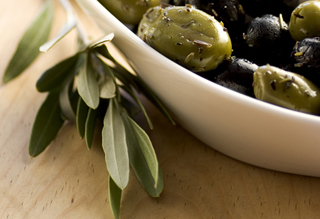 The Mediterranean diet has long been touted for its health benefits, so it comes as little surprise that this common diet followed throughout the world has been found to also lower the prevalence of metabolic disorders.
The Mediterranean diet has long been touted for its health benefits, so it comes as little surprise that this common diet followed throughout the world has been found to also lower the prevalence of metabolic disorders.
This conclusion came on the heels of 50 studies and the results of the meta-analysis of those studies, as published by the Journal of the American College of Cardiology just this week.
Overall, the results of the studies found that:
- Individuals who followed a Mediterranean diet had a lower waist circumference.
- Individuals who followed a Mediterranean diet had lower high-density lipoprotein cholesterol.
- Individuals who followed a Mediterranean diet had lower triglycerides.
- Individuals who followed a Mediterranean diet had lower systolic and diastolic blood pressure.
- Individuals who followed a Mediterranean diet had lower glucose levels.
- Individuals who followed a Mediterranean diet had a lower risk of metabolic syndrome.
The results were compared with individuals who were on control diets or those individuals who had a “low adherence” to a Mediterranean diet. The analysis of these 50 studies was performed by Demosthenes Panagiotakos, PhD of Harokopio University in Greece and published in the Journal of the American College of Cardiology. The combined studies in this analysis had over a half million participants.
What is a Mediterranean Diet?
Although the concept of the Mediterranean diet differs because it is adopted in many of the Mediterranean countries, in general this diet includes:
- Eating a variety of plant-based foods, including fruits, vegetables, whole grains, legumes and nuts
- Using heart healthy oils like olive oil and canola oil in favor of butter and margarine
- Making regular exercise part of your lifestyle
- Reducing salt and replacing it with other herbs and spices
- Limiting the amount of red meat in your diet
- Incorporating poultry and fish into your diet at least two to three times each week
- Indulging in moderate amounts of red wine (one glass per day)
The notion of eating nuts and cooking with olive oil and/or canola oil is very important in the Mediterranean diet because the fats found in these foods are of the heart-healthy variety. Because they are still nonetheless high in fat, they should be enjoyed in moderation on the Mediterranean diet. It is important to consider, for example, that bread is enjoyed often in the Mediterranean diet, but it is always dipped in olive oil and herbs instead of butter or margarine.
In short, the Mediterranean diet focuses on eating a well-balanced diet that is rich in fruits, vegetables, lean meats and whole grains. The fats eaten on a Mediterranean diet are usually low in saturated fat, thereby making this diet ideal for those individuals looking to maintain their weight, as well as their heart health.
The Mediterranean diet doesn’t focus on fat consumption, but rather making better choices when it comes to the fats we eat. In addition, enjoying a glass of red wine a few nights a week has also been shown to decrease, in some studies, the risk of heart disease. So, have a glass of wine, a nice piece of fish with loads of vegetables and enjoy the company of friends and family! Your weight, palate and heart will thank you!
VN:F [1.9.17_1161]
Rating: 0.0/10 (0 votes cast)
VN:F [1.9.17_1161]
Share this story:
About The Author
I have always been interested in food and the effect it has on weight and the bodies overall well being, but it wasn't until I removed sugar, coffee and bad carbohydrates that I truly understood that you are what you eat!
By Victoria on March 15th, 2011
18 Easy Ways to Add More Vegetables to your Diet
A diet rich in vegetables is good for our health – and good for our waistline. In fact, the bulk and fiber found in vegetables can fill you up, leaving less room for cravings for sweets and unhealthy treats.
However, saying we need to eat more vegetables and actually eating more vegetables are two very different things!
If you’re looking to add more vegetables into your diet, here is our list of easy ways to meet your goal of three to five servings a day:
- Instead of using traditional pasta, make spaghetti squash “noodles” and top them with your favorite marina sauce.
- Puree a variety of vegetables (think cauliflower and sweet potatoes) and add them to breading, spaghettis sauce, ground meat and cream-based soups. This is a great way to get more vegetables into your kids’ diet!
- Make a casserole with a base of shredded vegetables.
- Add salsa over other condiments on everything from baked potatoes and burritos.
- Mash cauliflower and add garlic, Parmesan cheese and a bit of butter.
- Make an egg-white omelet with loads of fresh vegetables like peppers, onions and mushrooms.
- Chop and shred a number of vegetables at the beginning of each week so you can easily add them to your favorite dishes throughout the week without hassle.
- Cut strips of celery and carrots and keep them in water-filled containers in the refrigerator for a quick and easy snack.
- If you need a quick and easy way to get your vegetables, consider purchasing a juicer. Fresh-squeezed carrot juice is delicious and is a nutritious way to start your day.
- Spend a lazy Sunday afternoon making a big bowl of vegetable-based soup and freeze it to eat throughout the course of the work week.
- Instead of making meat the centerpiece of your meal, switch it up with vegetables. Make a large salad or mixed vegetables the main part of your meal, and your waistline will thank you for it!
- If you don’t think you like a certain vegetable, give it another try. Often times, adults won’t eat vegetables because they didn’t like them as children, but taste for food changes as we age, so give those vegetables another try!
- Purchase a wok and make a vegetable and chicken stir fry part of your weekly routine.
- Eat local and in-season vegetables. Awaken your senses by visiting your local farmer’s market and discover the many beautiful vegetable selections in your area. Who knew fennel bulb could be so delicious roasted, and that kale makes delicious baked chips?
- It is quite possible to puree vegetables into your favorite cake recipe. Add a cup of pureed spinach into your next cake, and you won’t even taste the difference!
- Get creative when you make a salad. There are so many great vegetables to add to salads, so don’t immediately add just tomatoes and onions or you’ll quickly get bored. Add crunchy toppings like rice noodles or sunflower seeds and spice up your salad!
- Sautee or steam fresh vegetables and add a variety of herbs and spices to make things exciting.
- Make a veggie pizza. Make a white pizza with tomatoes, onions and other vegetables or make a sauce-based pizza and load it up with vegetables instead of meat.
Vegetables can be an easy, delicious part of all your meals, especially with these tips!
VN:F [1.9.17_1161]
Rating: 0.0/10 (0 votes cast)
VN:F [1.9.17_1161]
Share this story:
About The Author
I have always been interested in food and the effect it has on weight and the bodies overall well being, but it wasn't until I removed sugar, coffee and bad carbohydrates that I truly understood that you are what you eat!
By Victoria on March 12th, 2011
Achieving your Weight Loss Goals through Raw Foods
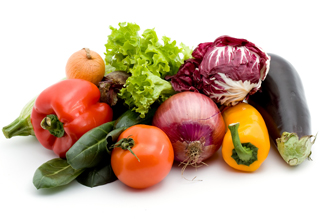 It is no surprise that processed foods are a major culprit surrounding our overweight country.
It is no surprise that processed foods are a major culprit surrounding our overweight country.
As a result of the consumption of processed foods, we have become a country addicted to refined sugars, processed starches and deep-fried foods. The packaged, processed foods we eat have changed the way our bodies function and, perhaps more importantly, what we crave.
To combat this trend, many people are turning to raw foods as a way to get back to basics and eat naturally. In addition to being great for our overall health, the consumption of raw foods may help us lose those extra pounds, as raw foods naturally have fewer calories and fat than processed versions. Instead of turning to processed foods – even processed and packaged diet foods – people are now turning to all natural foods.
Benefits of Raw Foods
Although turning to an all-raw diet may not be realistic for all people, including more raw foods in your diet on a daily basis may help you feel better, have more energy, encourage better digestive health and, of course, lose weight in the process!
In addition to weight loss, some of the other obvious benefits of eating raw foods include: softer skin, younger looking appearance, clearer complexion, stronger hair and nails, and even decreased incidences of illness and disease.
Understanding the Theory
The theory behind eating raw is quite simple: raw foods eliminate toxins in our bodies, including fats that have built up over the years. Raw foods provide a detoxing quality, which therefore helps us feel better, look better and lose weight.
Easy, Slow Changes
The goal of eating raw is to slowly introduce raw foods into your diet. Most dieticians agree that you can see major changes in your body and overall health by simply replacing some of your food choices with raw ones. Whether you begin by replacing raw foods with cooked ones for your breakfast, lunch, dinner or early morning snack, the important part is to make a change.
Some of the changes you will want to make in your life when it comes to eating raw include:
- Make leafy greens a large part of your diet. Whether it’s eating a big salad with leafy greens for lunch or adding a vegetable juice smoothie (with loads of greens) into your morning routine, leafy greens should make their way onto your plate at least once a day. In addition to being nutrient dense, leafy greens are also a fantastic source of fiber, which aids in the body’s natural digestion process.
- Regardless of whether or not you’re eating raw, avoid eating late at night. Anything eaten a few hours before you go to bed will not be digested as well as food eaten earlier in the day.
- Try new foods. Eating raw will quickly get tiring if you eat the same foods day in and day out. Therefore, the best thing to do is experiment with new fruits, vegetables, nuts and legumes. Head to your local farmer’s market, make smoothies and enjoy what nature has given us!
Eating raw foods means enjoying what Mother Nature gives us naturally, which is significantly lower in fats, calories, and sodium than the processed version. Now that’s good news for your weight and health!
VN:F [1.9.17_1161]
Rating: 0.0/10 (0 votes cast)
VN:F [1.9.17_1161]
Share this story:
About The Author
I have always been interested in food and the effect it has on weight and the bodies overall well being, but it wasn't until I removed sugar, coffee and bad carbohydrates that I truly understood that you are what you eat!
 It may seem like a rather daunting prospect to change your diet to one that is healthful. However, the truth is that small changes can make a big difference too.
It may seem like a rather daunting prospect to change your diet to one that is healthful. However, the truth is that small changes can make a big difference too.
















